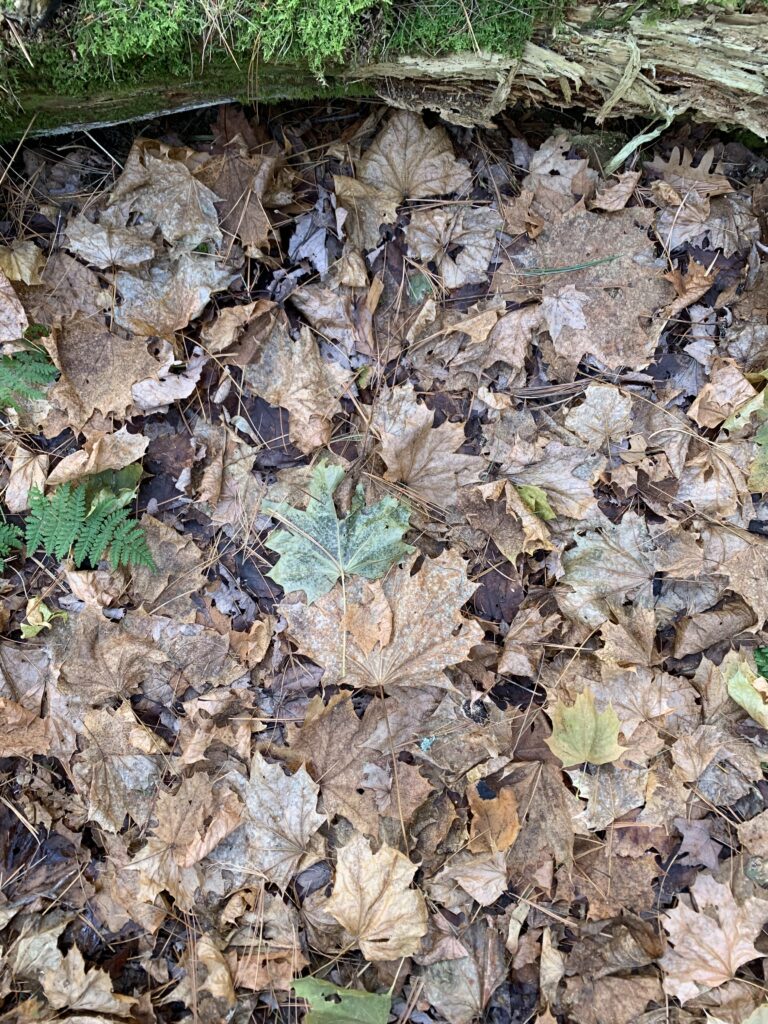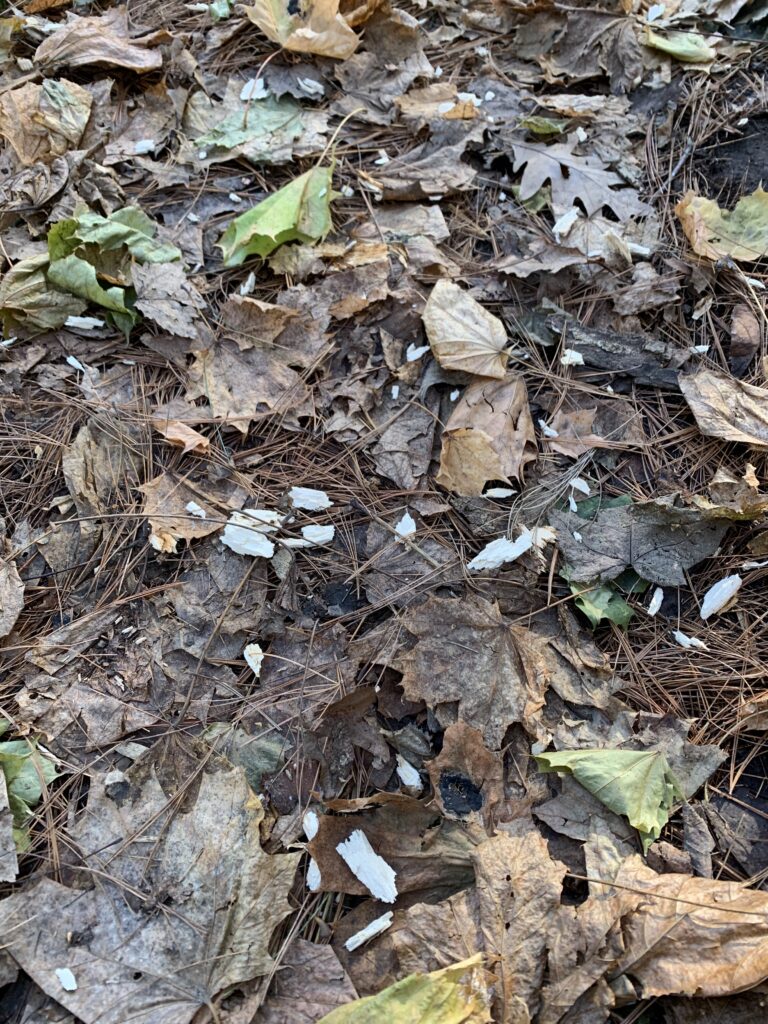I made my last trip to my phenology spot this semester on a sunny Monday morning, the chilly wind quickly arousing me from the last vestiges of the previous night’s slumber. As I approached my phenology spot, I was surprised to see the “fern forest” of my phenology spot had quickly turned into a “fern flatland”: where once before the ferns had stood proudly tall, they now lay close to the ground, as if clutching to its moderating warmth. Even so, they were still a verdant green – a color reminiscent of a forest on a summer day. This made up for the color that was fading from the surrounding environment.


Where during my last site there had been ample yellow from leaves changing colors, now remained only brown. Maple leaves of the palest green and tinged with yellow still lay on the forest floor, but the process of decay has set in for most of the leaves, removing any hint of the fresh leaf drops I had witnessed last visit. Speaking of leaves, some young norway maples still clung to withering leaves on their branches, though at this point, around 75% of the deciduous trees in the area had dropped their leaves completely. Around me, much of the understory vegitation had dropped their leaves too; one bush still had a few bright red berries (though they did not come out well on camera), easily visble against the brown all around.
However, even with the contemplation of the vegitation around me, I couldn’t help feel a bit dejected. Throughout the time I had been to my phenology spot over the past few months, I witnessed little animal activity. I heard some bird calls and a squirrel or two, but nothing I would consider to be too exciting. So, as I started to leave my phenology spot, I was bummed that there was no wildlife to be found. However, as I walked along the trail, I came across this suspicious pile.

As I bent over for a closer look, I could see they were chips of wood, seemingly chipped off from a nearby snag. As I stood up from my examination of the curious pile, I heard a solid Thud. Thud. Thud. And, as I craned my head to the sky, I saw a Pileated Woodpecker!

Easily visible to the bright red patch at the top of the head, the woodpecker made itself known as it drilled into the side of the tree, probably hoping for a nice brunch of insects and worms! Though I had thought that my phenology spot was relatively devoid of animal activity, this sighting well and truly proved me wrong – there is so much to see if you only look up!
Phenology Spot Reflection

As this semester comes to a close, I can say I chose well with my phenology spot. If I had to pick a physical feature that I liked most, it would be the ferns. I have numerous fern forests near my home and seeing them here reminded me of how much I look foward to walking in the woods when I get back. However, I loved the white pines just as much: I don’t see many coniferous trees at home, and seeing these sentinels stand true and tall in the woods made it clear I chose a location new to me. Overall, I think deciding to have my spot in Centennial Woods was a good idea. I walked by the trail leading to my spot numerous times as I went to go to other locations for labs and assignments, and each time I walked by, I felt the pull to go and visit. As I was almost always so close to my spot, I never truly felt “apart” from my spot in that regard.
